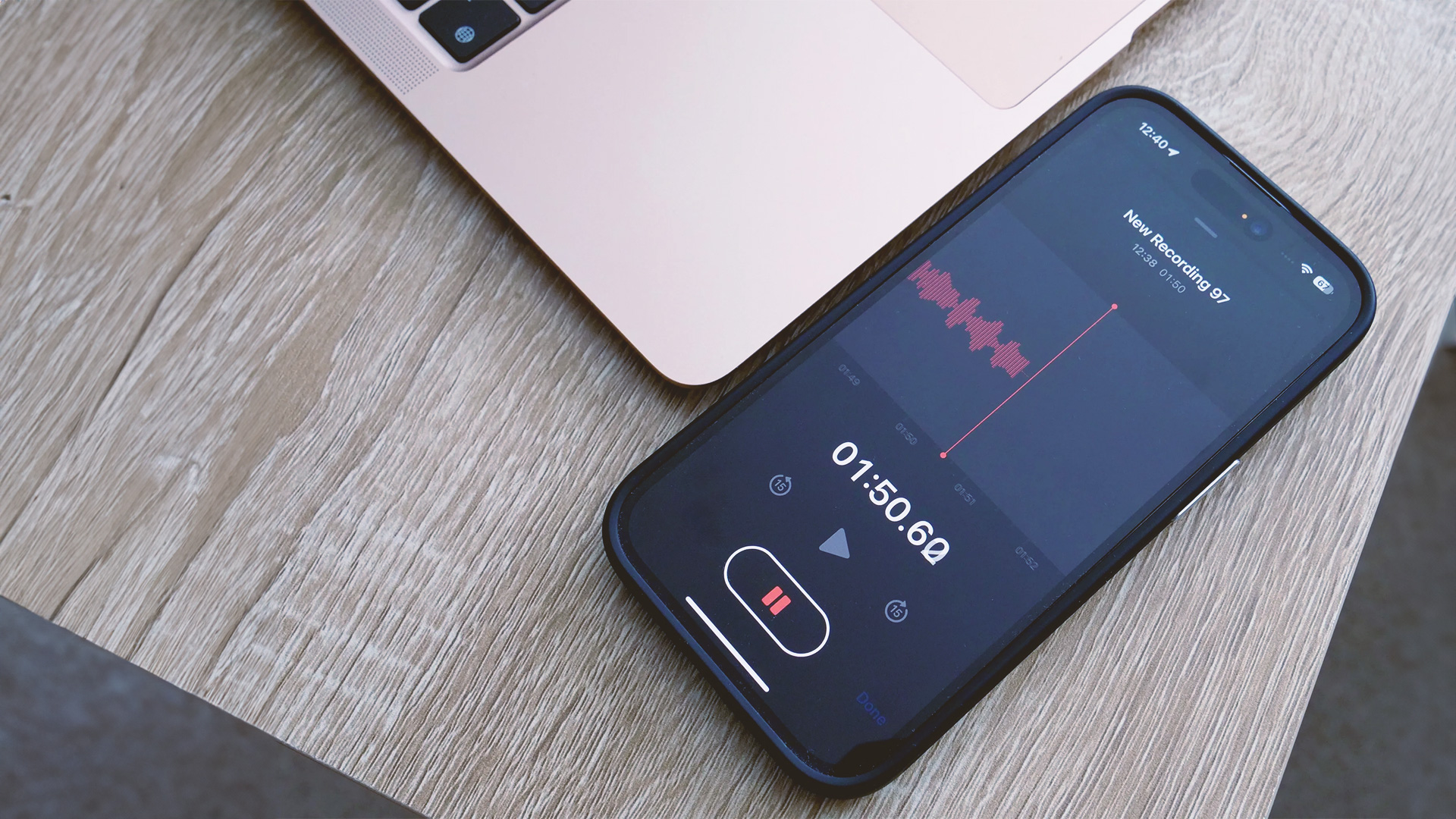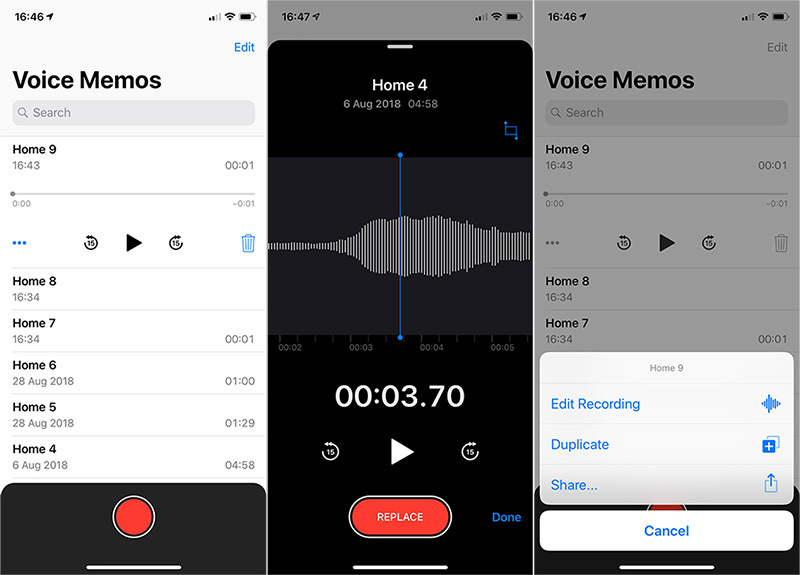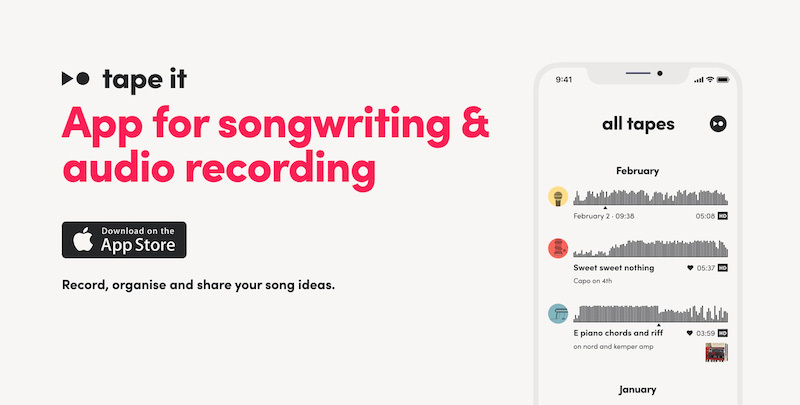Blog
3 Artists Who Used Voice Memos to Make Hit Tracks
9 Feb '2024
The humble voice memo has featured in some hit tracks from top artists in recent years, showing that bank-breaking recording equipment is not the be-all and end-all

It’s hard not to marvel at the progression of audio technology in the last two decades. Not that long ago, you’d need a studio full of expensive and complicated equipment in order to write, record, produce and mix a track with the kind of professional polish needed to be a hit. Now, mobile phone microphones and digital processing is of such a good quality that we really don’t need a lot to make great music that resonates with our listeners.

As producers, all too often we believe that we’ll release our first hit as soon as we invest a month’s paycheck into an expensive mic and that shiny plugin we keep seeing advertised. In reality, capturing the right vibe with the tools we have is what it really boils down to. With that in mind, let's examine some ways in which artists have used voice memos to make hit tracks, and see how you can too.
Charlie Puth - Voicenotes
The American’s second album, Voicenotes, is a stellar example of how far audio recording and production has come. In years gone by, not only would artists need a whole studio of gear to get a track onto the Billboard Top 100, they’d need a whole team of producers and engineers too. In the case of Charlie Puth, not only does he write and sing the music, but he produces it too.
And if the name of the album hasn’t given it away already, Puth enlisted the help of his trusty iPhone to record much of the contents of the album. In fact, he says that every song on the 11-strong album contains recordings that originated from his iPhone. Of course, the album contains elements that don’t originate from voice memos, but the technology has been incorporated in a range of creative ways.
While producing Attention, arguably the biggest track on his 2018 album, Puth reached for the Voice Memos app on his iPhone and recorded the individual notes from a guitar melody before arranging them within his DAW. Not only that, but by recording each of those notes twice and panning each instance in opposite directions, he was able to create a sense of stereo width that wouldn’t have been possible with a single mono recording.
In addition to recording instruments, Puth beatboxed into his phone to create sub-layers of percussion. The purpose of this was to drive the existing programmed and recorded drums along, and add a human element to the composition.
Fred Again - Actual Life
You might know this artist from that viral Boiler Room set, but Fred Again has slowly but surely been building his career as one of the most in-demand and influential producers of the last few years. Having produced for the likes of Ed Sheeran, George Ezra, Headie One and more, Fred Again’s Actual Life series of albums has cemented him as a solo artist and a household name.
A huge part of the success of these albums can be attributed to his ability to convey an authentic sense of emotion and relatability in the productions. Not only is this achieved through clever lyricism and inspired songwriting, but also the palette of sounds used within the compositions creates a sense of familiarity and closeness that resonates with listeners. The use of mobile voice memos and recordings in general are responsible for this, as discussed in his first appearance on the Tape Notes podcast.

Directed by his decision to work outside in the midst of the real world, every sound in Actual Life contains a bed of background noise. That background noise consists of whatever the background noise was at the time and location in which the song was originally written. This is most audible on tracks including Kyle (I Found You) and Hackney (Interlude). The use of these real world found sounds tie the production in with Fred’s emotional state when writing them, thus helping to make the compositions feel more cohesive and natural.
In some instances, voice note recordings feature as something more than background textures and actually serve as the focal point of the record. Referring once again to Hackney (Interlude), the inclusion of a very personal message recorded to voice note makes it onto the album. In fact, Fred Again has stated that he’ll use his phone to record just about anything other than lead vocals, and part of the fun and creativity comes from figuring out how to make those recordings work within the context of the entire composition.
Taylor Swift - Me
It might surprise you to see Taylor Swift on this list. You’d be forgiven for assuming that a contemporary music icon of her stature would have an entire team of producers and writers to generate ideas, but even the best of the best wake up in the middle of the night with lightbulb moments. Speaking on the Zoe Ball BBC Breakfast Show back in 2019, the Pop star stated that her phone is filled with voice notes of lyrical or melodic ideas that can come to her at any time.
By her own admission, they don’t all result in a hit track (in fact she said 97% of them are unintelligible), but if the odd idea makes it into a successful record then we’ll call that a worthwhile exercise. We’ve all had a great idea and assured ourselves that we’d remember it later, only for it to be lost to the ether just moments later. As a creative in any field, being able to log ideas as and when they come to you is worth its weight in gold.
How can you use voice memos in your music?
One of the best things about the advancement of technology in the music production world is that it’s now accessible to everyone. Some artists record and produce entire tracks on their phone, such as Kendrick Lamar and J. Cole producer Steve Lacy. With that in mind, using voice memos in your music is as simple as getting your phone out and getting creative.
Having said that, there are a few tricks and tips that will make your exploration into recording music on your phone more painless.
Use a dedicated voice note app
While your phone probably comes with an app that can record voice memos, there are now a swathe of dedicated apps that were developed with this particular purpose in mind. Apps like Tape It and Spire add an array of useful features for music producers that aren’t available in phone manufacturers standard apps.
Tape It lets you record in stereo, set markers, write notes or take pictures of a particular recording environment or setup. Spire goes a step further and lets you apply processing, edit and tune your vocals on the fly.
Get creative with your processing
Let’s not fool ourselves, you’re not going to get radio-ready recordings straight out of your voice notes app. Once you’ve moved your recordings into your DAW, you might need to be a little more heavy-handed with your processing than you’re used to. Background noise, wind noise and a narrower frequency response are all issues you’re likely to encounter at some point or another. Don’t be afraid to get extreme with your processing, just follow the golden rule of music production: As long as it sounds right, it is right.
Play to your phone microphone’s advantage
While the quality of the microphones in mobile phones has improved considerably, when it comes to hi-fidelity recording there’s still no replacement for a good quality microphone going into a decent preamp in a treated environment. That said, music is about expression, and it can be hard to communicate that expression on demand, particularly in a sterile studio setting with a whole host of people you’ve only just met. Recording with your mobile phone certainly has its place, even if that means trading some audio quality for some feeling or emotion.
FAQs
How do you make a song from a voice memo?
The first step in making a song from a voice memo is to download and use a dedicated app like Tape It or Spire, in order to get full control over your recordings. Once you have an app, you should try to record vocals, background sounds, and rhythms occurring in the environment.
With your audio recorded, the next step is to load your recordings into a digital audio workstation (DAW), where you can go about incorporating them into a full track. You’ll probably need to clean up your recordings to remove unwanted background noise, apply equalisation to change the tone of your recordings, and layer in other elements for more depth.
Why did Apple get rid of the Music Memos app?
Apple decided to update the Voice Memos app, rather than continuing on with the Music Memos app. Their reasoning was that the Voice Memos app and Music Memos app were too similar, and they wanted to respond to increased competition in the music recording app market.
Which artists use voice memos in their music?
Here is a short list of notable artists who use voice memos in their music:
- Taylor Swift
- Fred Again
- Charlie Puth
- Chris Lake
- Jacob Collier
- Steve Lacy
- Frank Ocean
- J Cole
How do I convert voice notes to MP3?
Here are three of the best ways to convert voice notes to MP3. The first is to use a file conversion website, there are plenty to choose from online that are free to use. Another option is to use the Apple Music desktop app, which has an audio conversion feature. Lastly, you could load your voice note into a DAW and then export it as an MP3.


